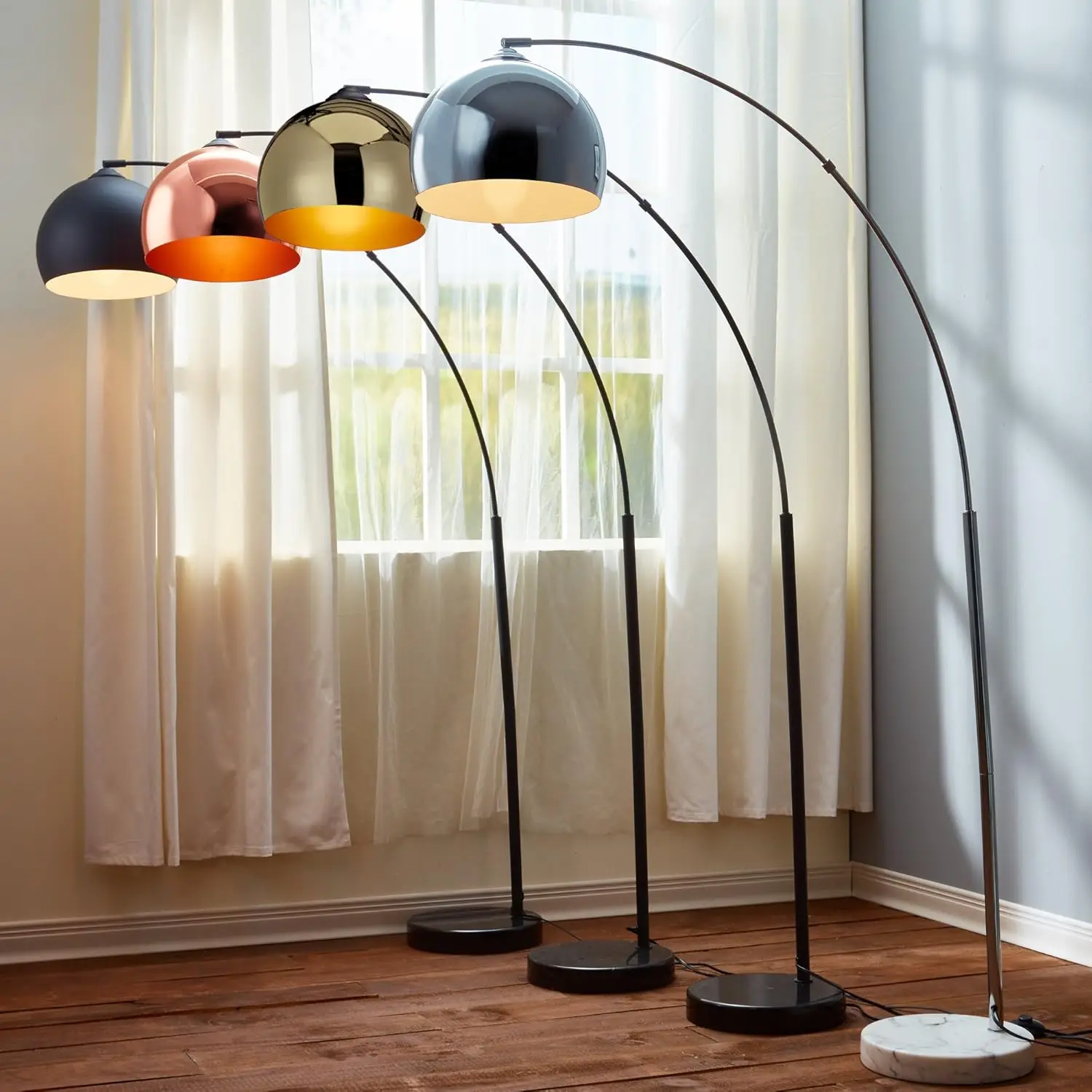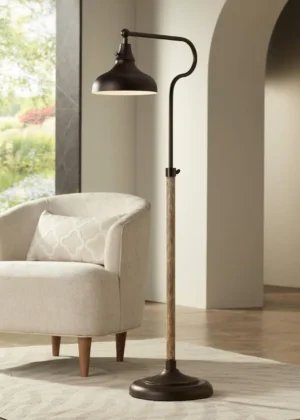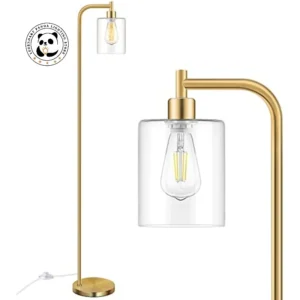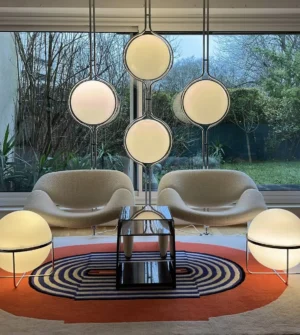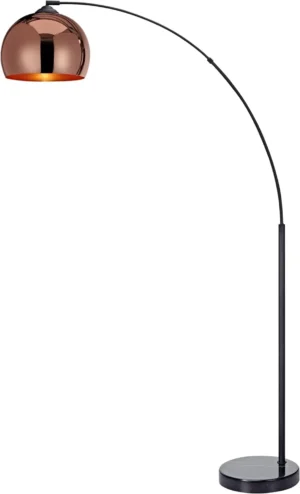Understanding Arc Lighting in Interior Design
Arc lighting represents one of the most distinctive and elegant lighting solutions in modern interior design. These floor lamps feature a gracefully curved arm extending from a weighted base, providing overhead illumination without requiring ceiling installation. What makes arc lamps special is their ability to deliver focused light exactly where you need it while adding a sculptural element to your space.
The modern arc lamp evolved from the iconic Arco lamp designed in the 1960s, which revolutionized how we think about floor lighting. Today’s arc lamps range from faithful reproductions of mid-century classics to contemporary interpretations with sleek lines and innovative materials.
These versatile lighting fixtures serve dual purposes in interior design:
– They provide practical task lighting over seating areas, reading nooks, and work surfaces
– They create visual interest and architectural drama as statement pieces in a room
What truly sets arc lamps apart from standard floor lamps is their unique combination of height (typically 6-7 feet tall), impressive reach (arcs extending 30-40 inches or more), and adjustability features. This makes them particularly valuable when matching arc lamps with furniture for both aesthetic appeal and functional lighting. For maximum versatility, many homeowners prefer adjustable arc floor lamps that can be repositioned as needed to accommodate changing room arrangements.
Essential Considerations for Arc Lamp Placement
Before positioning an arc lamp in your space, several key factors deserve careful consideration to ensure both aesthetic harmony and practical functionality.
Room dimensions play a crucial role in successful arc lamp placement. Most arc lamps require ceiling heights of at least 8 feet to accommodate their tall stature, though some compact models can work in spaces with lower ceilings. The lamp’s sweep (the horizontal distance covered by the arc) typically ranges from 30-40 inches, requiring adequate floor space for proper positioning.
Scale and proportion are equally important when selecting an arc lamp. A massive oversized lamp can overwhelm a small space, while a petite lamp might appear insignificant in a large room with substantial furniture. Consider both the height of your ceiling and the scale of your furniture when selecting an arc lamp.
Key placement factors to consider include:
– Light spread pattern and beam angle of your specific lamp model
– Distance from seating areas (typically 12-18 inches from the edge of furniture)
– Base stability on your flooring type
– Access to power outlets without creating trip hazards
– Integration with your existing lighting scheme (ambient, task, and accent lighting)
When harmonizing arc lamps with interior design, consider how the lamp will interact with other design elements in your space. For rooms with generous proportions or particularly high ceilings, large oversized arc floor lamps can create dramatic visual impact while providing illumination over substantial furniture groupings.
Living Room Arc Lamp Arrangements: Creating Focal Points
The living room offers perhaps the most natural setting for arc lighting, where these fixtures can simultaneously illuminate activities and serve as statement pieces that anchor your design.
When positioning arc lamps with sectional sofas, placement behind the sofa with the arc extending over the seating area creates an effective lighting solution without consuming precious floor space in front of the furniture. For optimal lighting, position the base approximately 24-30 inches behind the sofa with the arc extending 30-36 inches over the seating area. This creates a perfect spotlight for reading, conversation, or other activities.
Creating dedicated reading nooks becomes simple with strategic arc lamp placement. Position the lamp so its light falls directly over your favorite reading chair, with the light source approximately 20-24 inches above and slightly behind your shoulder to minimize shadows on your reading material.
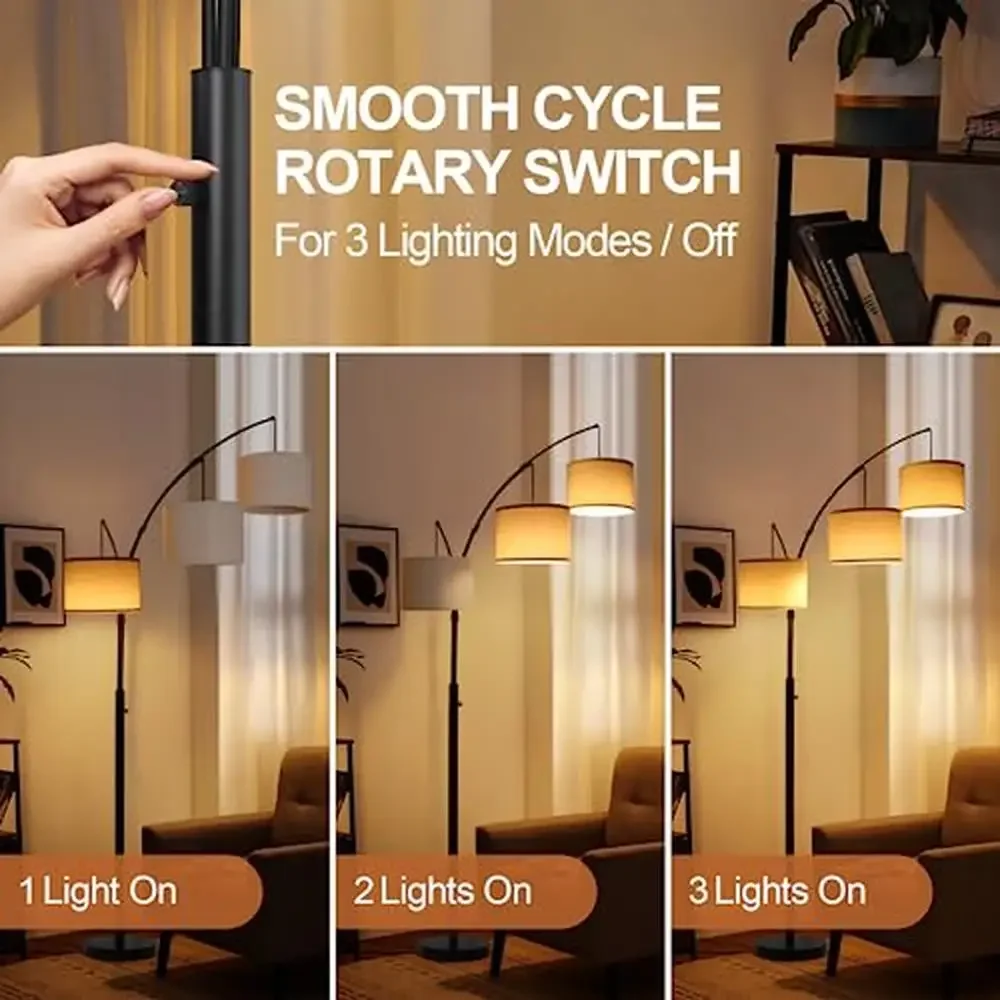
Arc lamps excel at defining conversation areas within larger spaces. By positioning the lamp at the edge of a furniture grouping with its light directed toward the center, you visually connect the seating pieces while providing functional illumination for socializing.
When determining placement with other furniture elements:
– Position arc lamps to complement rather than compete with coffee tables
– Consider the visual weight of all elements in the seating arrangement
– Use the arc lamp to balance asymmetrical furniture groupings
In open-plan spaces, arc lamps help anchor floating furniture arrangements away from walls. The substantial base creates a visual anchor point while the arching arm defines the boundaries of the seating area. When pairing arc lamps with sofas, consider both the height of the sofa back and the seating depth to determine optimal positioning. For larger sectional arrangements, specific arc floor lamps for sectionals provide extended reach to illuminate multiple seating positions. Many designers prefer black arc floor lamps for their versatility in coordinating with various interior color schemes.
Enhancing Dining Areas with Arc Lighting
While pendant lighting traditionally dominates dining areas, arc lamps offer a refreshing alternative that provides similar overhead illumination without requiring electrical installation or ceiling modifications.
For proper positioning above dining tables, aim to place the base of the lamp 24-30 inches from the edge of the table. The bottom of the lamp shade should hang approximately 30-36 inches above the table surface, providing adequate illumination without blocking sightlines across the table. This height allows diners to see each other clearly while providing sufficient task lighting for meals.
When matching arc lamps with dining tables, consider these proportional guidelines:
– Round tables (4-6 person): Choose an arc lamp with a 30-36 inch reach
– Rectangular tables: Position the lamp to illuminate the center third of the table length
– For larger tables, consider models with multiple adjustable arms or heads
Remember to leave ample clearance for diners to stand and move around the table without bumping into the lamp. A minimum of 24 inches between the table edge and any nearby furniture or walls will allow comfortable movement while accommodating the lamp base.
For added stability in dining areas where bumps and jostles are common, consider marble base arc floor lamps which provide excellent balance with their substantial weight and low center of gravity.
Arc Lamps in Bedroom Settings: Balancing Function and Ambiance
Bedrooms present unique opportunities for arc lighting that balances practical functionality with the relaxing atmosphere essential for rest.
As alternatives to traditional bedside table lamps, arc lamps offer several advantages in bedroom settings. They eliminate the need for nightstands, freeing up floor space in compact bedrooms while providing directional light perfect for reading in bed. Position the base 20-24 inches from the edge of the bed with the head angled to illuminate your reading material without disturbing your partner.
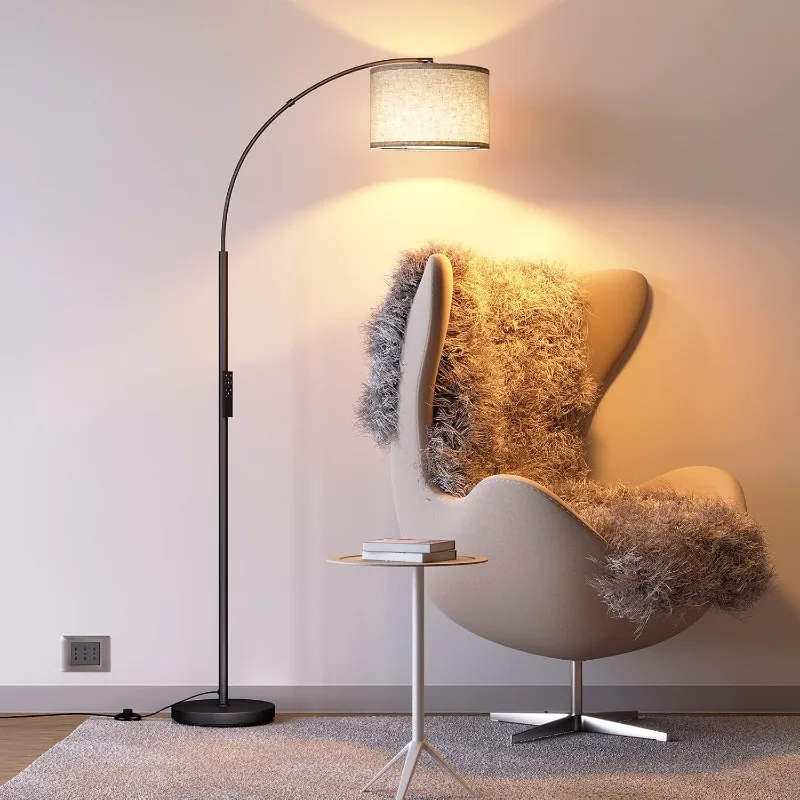
For creating dedicated reading areas within bedroom spaces, place a comfortable chair near a window with an arc lamp positioned to complement natural daylight during the day while providing adequate illumination at night. The arc should extend approximately 26-30 inches over the seating area.
Light intensity considerations become particularly important in sleep environments. For bedrooms, dimmable arc floor lamps allow you to adjust brightness levels according to activities and time of day. Opt for lamps with warmer color temperatures (2700-3000K) that promote relaxation rather than cooler tones that might interfere with sleep.
In smaller bedrooms where space is at a premium, the space-saving benefits of arc lighting become especially valuable. By eliminating the need for table lamps and their supporting surfaces, arc lamps free up precious floor space while providing better illumination from above.
Home Office Arrangements: Productivity Through Lighting
The home office requires thoughtful lighting solutions that support focus, reduce eye strain, and enhance productivity throughout the workday.
When positioning arc lamps for computer workstations, placement becomes critical to avoid screen glare and reflections. The ideal position is slightly behind and to the side of the computer monitor, with the light directed away from the screen but still illuminating the desk surface. This creates complementary lighting that reduces the contrast between the bright screen and surrounding areas.
For managing screen glare effectively:
– Position the arc lamp on the opposite side of your dominant hand
– Angle the shade to direct light onto work materials rather than the screen
– Consider models with adjustable brightness for different times of day
– Opt for lamps with diffused rather than direct light sources
Arc lamps excel at providing adequate task lighting for paperwork and physical materials. Position the light approximately 18-24 inches above your work surface, angled to illuminate documents without casting shadows from your hands as you write.
For video conferencing setups, arc lighting can dramatically improve your appearance on camera. Position the lamp slightly above and in front of your face, angled down at approximately 45 degrees, to provide flattering illumination that eliminates harsh shadows.
The strategic placement of floor lamps for focused reading applies equally well to office environments, where proper lighting significantly impacts concentration and productivity throughout the workday.
Matching Arc Lamps to Furniture Styles
The visual dialogue between your arc lamp and furniture creates cohesive design that elevates your entire space. Different interior styles benefit from specific approaches to this pairing.
For contemporary and minimalist spaces, arc lamps with clean lines and minimal ornamentation complement the streamlined aesthetic. Look for models featuring materials like brushed metals, glass, or matte finishes that echo elements in your furniture. The lamp should appear as a natural extension of your design language rather than competing with existing pieces.
Mid-century modern interiors pair beautifully with arc lamps, as these fixtures were popularized during this design era. Mid-century arc lighting design typically features warm wood elements, brass finishes, and drum or cone-shaped shades. When paired with tapered-leg furniture and organic forms characteristic of this style, these mid-century arc floor lamps create period-authentic lighting solutions.
For transitional and traditional spaces, look for arc lamps with more substantial bases, decorative details, and fabric shades that complement classic furniture silhouettes. Materials like antiqued brass, bronze, or nickel finishes coordinate well with traditional furniture styles.
When coordinating finishes, consider these classic pairings:
– Brass arc lamps complement walnut, teak, and other warm wood tones
– Chrome or nickel finishes pair well with glass, marble, and cooler color palettes
– Bronze or black finishes create versatile anchors that work with almost any furniture style
Remember that contrast can be as effective as coordination—a sleek contemporary arc lamp can add refreshing juxtaposition to a room furnished with antiques or traditional pieces.
Small Space Solutions: Arc Lamps in Apartments and Compact Rooms
Limited square footage doesn’t mean sacrificing stylish lighting. With thoughtful selection and placement, arc lamps can actually enhance smaller spaces.
In apartments and compact rooms, managing scale becomes essential. Look for arc lamps with more modest proportions—heights under 6 feet and arcs spanning 20-24 inches rather than the more dramatic 40+ inch reaches of larger models. These proportionally appropriate fixtures provide the distinctive arc silhouette without overwhelming tight quarters.
Corner placement offers one of the most effective small-space strategies for arc lamps. By positioning the base in an otherwise unused corner, the arc can extend over functional areas like seating or work surfaces without consuming valuable floor real estate in the center of the room.
Multi-functional arrangements maximize the utility of arc lamps in compact spaces:
– Position over both a small sofa and side table to illuminate two functional areas with one lamp
– Use the light both for general illumination and as a spotlight for artwork or plants
– Select models with adjustable features to redirect light as needs change throughout the day
For apartments with limited outlets or awkward layouts, optimizing compact living with space-saving arc lamps offers creative solutions that enhance both functionality and style without sacrificing precious floor space.
Creating Visual Flow: Arc Lamps and Room Circulation
Beyond illumination, arc lamps influence how we perceive and move through space. Thoughtful placement enhances the natural flow of a room while guiding the eye through the interior.
When considering traffic patterns, position arc lamps away from main pathways with at least 24-30 inches of clearance to avoid creating obstacles. The base should be tucked close to furniture or walls, with the arc extending over areas where people gather rather than areas where they walk.
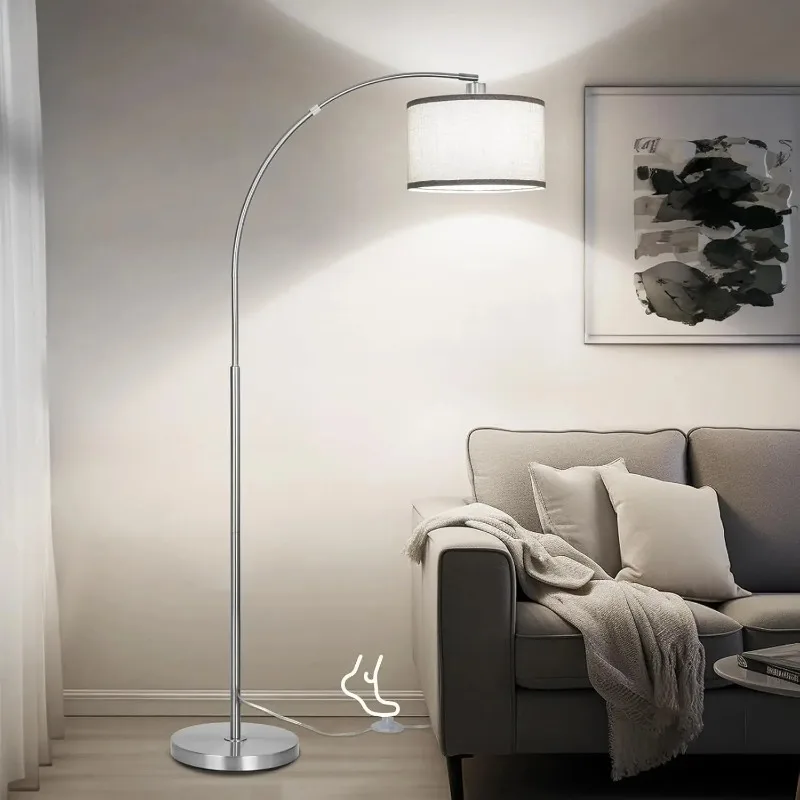
Arc lamps excel at creating visual pathways that guide the eye through a space. The curved line of the arc naturally draws attention, creating a visual journey from the base to the illuminated area beneath the shade. This can connect different zones within a room or lead the eye toward architectural features or focal points.
Common placement errors that disrupt flow include:
– Positioning bases in walkways where they become trip hazards
– Placing arcs too low over areas where people need to stand
– Creating visual congestion by competing with other dramatic design elements
When coordinating furniture and lighting throughout your space, consider how the sweeping form of an arc lamp contributes to the overall composition and movement within the room. The lamp should feel like an intentional part of the design that enhances rather than impedes your experience of the space.
Layering Arc Lighting with Other Light Sources
No single light source can meet all the illumination needs of a complex interior. Arc lamps work best as part of a thoughtfully layered lighting scheme.
When combining arc lamps with ceiling fixtures, consider the relationship between these two overhead sources. In rooms with central ceiling fixtures, position arc lamps to illuminate peripheral areas rather than duplicating light in the center of the room. This creates balanced illumination throughout the space without hot spots or shadows.
For integrating table lamps with arc lighting:
– Use table lamps for localized task lighting at desk or bedside areas
– Allow arc lamps to provide broader ambient or accent lighting
– Coordinate shade shapes and materials for visual cohesion
– Consider light temperature consistency across different fixtures
Creating depth through multiple light heights adds visual interest and dimension to your space. Position arc lamps at different heights from other lighting sources to create layers that add richness to the room’s atmosphere. The dramatic height of arc lamps contrasts beautifully with lower sources like table lamps or floor uplights.
LED arc floor lamps offer particular advantages in layered lighting schemes due to their energy efficiency and the ability to match color temperatures with existing light sources for consistent illumination throughout the space.
Advanced Arc Lamp Positioning Techniques
Adjustable Arc Floor Lamp, Bronze Arc Floor Lamp
Price range: $440.95 through $558.52 Select options This product has multiple variants. The options may be chosen on the product pageBrass Arc Floor Lamp, Contemporary Arc Floor Lamp, LED Arc Floor Lamp
Price range: $490.72 through $522.04 Select options This product has multiple variants. The options may be chosen on the product pageChrome Arc Floor Lamp, LED Arc Floor Lamp
Price range: $304.95 through $1,210.40 Select options This product has multiple variants. The options may be chosen on the product pageContemporary Arc Floor Lamp, Large Arc Floor Lamp, Marble Base Arc Floor Lamp
$224.94 Select options This product has multiple variants. The options may be chosen on the product pageMid-Century Arc Floor Lamp, Wood Arc Floor Lamp
$230.86 Select options This product has multiple variants. The options may be chosen on the product pageLED Arc Floor Lamp, Rattan Arc Floor Lamp
$313.58 Select options This product has multiple variants. The options may be chosen on the product page
Once you’ve mastered basic arc lamp placement, more sophisticated techniques can elevate your interior design to showcase architectural features and resolve challenging spaces.
Arc lamps excel at highlighting artwork or architectural elements. Position the lamp to cast light directly onto a painting, sculpture, or textural wall treatment, creating a gallery-like spotlight effect without installing specialized art lighting. The ideal distance depends on the size of the artwork, but generally 18-24 inches from the wall creates effective highlighting.
In open-plan spaces, arc lamps help define functional zones without physical barriers. Position lamps to illuminate specific activity areas—reading, conversation, dining—to visually separate these zones while maintaining the openness of the floor plan. The pools of light created beneath each arc naturally define the boundaries of each area.
For rooms with challenging architectural features like sloped ceilings, awkward corners, or structural columns, arc lamps offer flexible lighting solutions that can be adjusted to work with rather than against these elements. Their adjustable nature allows you to direct light exactly where needed despite spatial constraints.
Selecting the Perfect Arc Lamp for Your Space
With the placement principles established, selecting the right arc lamp for your specific needs becomes the final step in creating your ideal lighting arrangement.
Match lamp size to your room proportions using these general guidelines:
– Small rooms (under 200 sq ft): Select arc lamps under 6 feet tall with arcs spanning 24-30 inches
– Medium rooms (200-300 sq ft): Choose standard arc lamps 6-7 feet tall with 30-36 inch arcs
– Large rooms (over 300 sq ft): Consider oversized arc lamps over 7 feet tall with sweeping arcs of 36+ inches
When evaluating materials and finishes, consider both aesthetic harmony with your existing decor and practical durability concerns:
– Marble bases provide excellent stability but are heavier and more difficult to reposition
– Metal bases offer lightweight versatility but may require additional stabilization on plush carpeting
– Shade materials affect light diffusion—fabric shades provide softer, more ambient light while metal or glass directs light more precisely
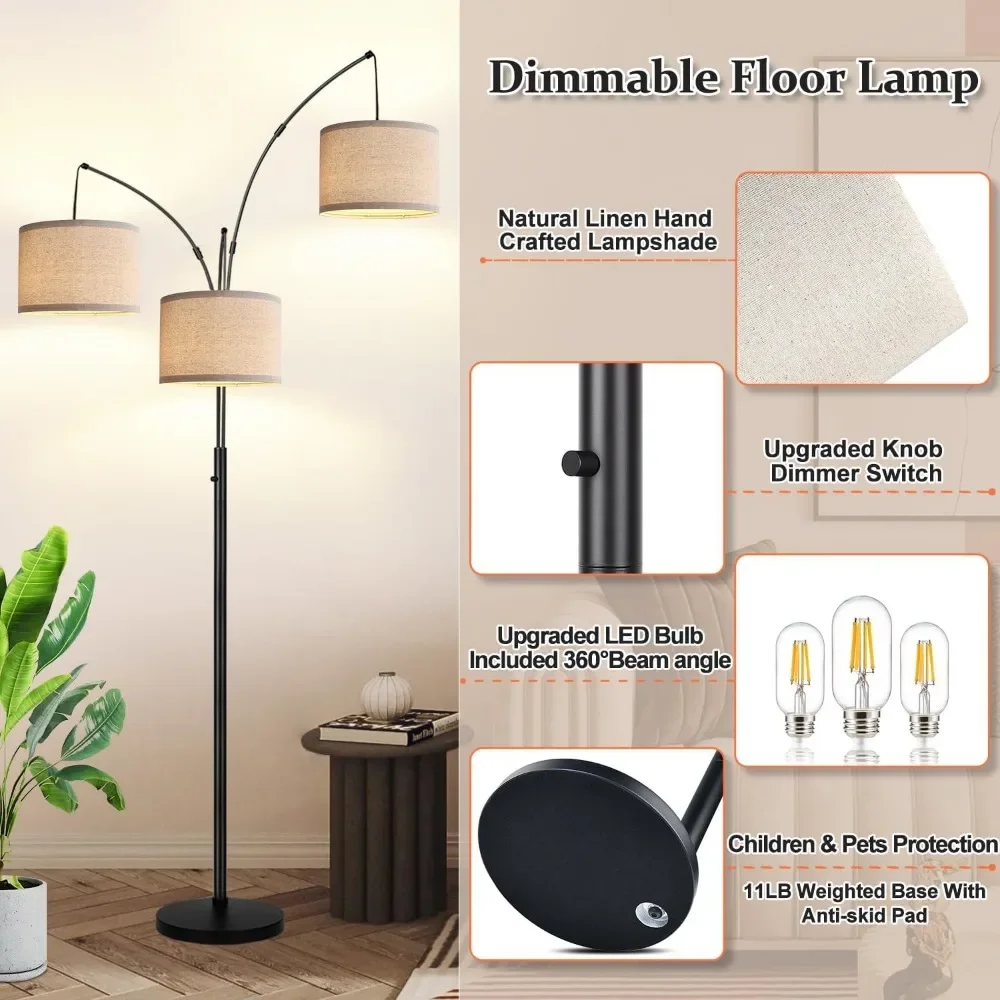
For maximum versatility, prioritize adjustability features that allow your lamp to adapt to changing needs:
– Height adjustability accommodates different ceiling heights and furniture arrangements
– Articulating arms provide precise positioning of light direction
– Rotating or swiveling shades direct light exactly where needed
– Dimming capability allows adjustment for different activities and times of day
Understanding how to properly match an arc lamp with sofa design ensures your lighting complements your primary seating, while 3-light arc floor lamps offer multiple points of illumination ideal for larger seating arrangements or rooms requiring more comprehensive lighting coverage.
Avoiding Common Arc Lamp Arrangement Mistakes
Even with careful planning, certain common errors can diminish the effectiveness of arc lighting. Awareness of these pitfalls helps ensure successful placement.
Common arrangement errors to avoid include:
– Positioning the lamp too far from seating areas, creating inadequate task lighting
– Placing the arc too low, causing people to bump their heads when standing
– Creating visual imbalance with a lamp that’s disproportionately large or small for the furniture
– Neglecting stability considerations, particularly on uneven floors or with active pets/children
– Overloading a space with too many statement lighting pieces competing for attention
Light distribution problems often result from improper angle or height adjustment. The lamp shade should be positioned to direct light toward your activity area without causing glare or casting awkward shadows. Adjusting the height and angle of the shade can resolve most distribution issues.
Safety considerations must never be overlooked when arranging arc lamps. Their cantilevered design creates potential tipping hazards if improperly positioned. Preventing arc lamps from tipping involves proper base placement, strategic positioning away from high-traffic areas, and in some cases, additional stabilizing measures for particularly top-heavy models.
By thoughtfully applying these principles to your specific space, you can create furniture arrangements with arc lighting that are both visually stunning and functionally superior. Arc lamps offer that rare combination of dramatic visual impact and practical illumination that can transform ordinary rooms into extraordinary living spaces.

